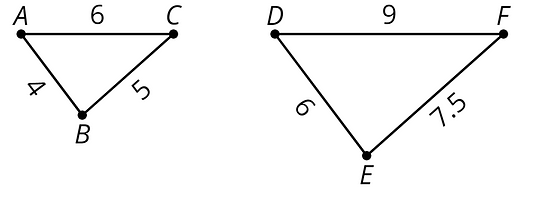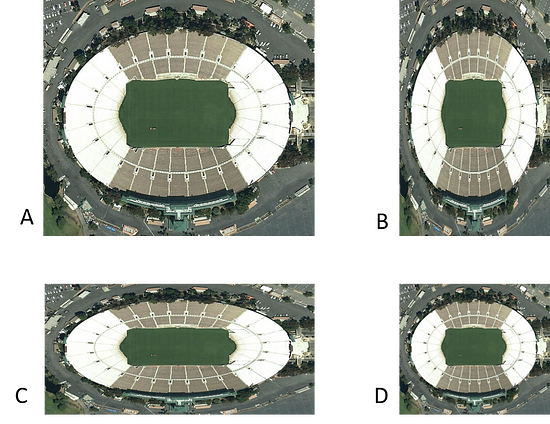Lesson 1What are Scaled Copies?
Let’s explore scaled copies.
Learning Targets:
- I can describe some characteristics of a scaled copy.
- I can tell whether or not a figure is a scaled copy of another figure.
1.1 Printing Portraits
Here is a portrait of a student. Move the slider under each image, A–E, to see it change.
- Which images are most like the original? Which are least like the original? Explain your reasoning.
- Some of the sliders make scaled copies of the original portrait. Which of the Portraits A–E do you think are scaled copies? Explain your reasoning.
- What do you think “scaled copy” means?
1.2 Scaling F
On the top left is the original drawing of the letter F. There are also several other drawings.
- Identify all the drawings that are scaled copies of the original letter F drawing. Explain how you know.
- Examine all the scaled copies more closely, specifically, the lengths of each part of the letter F. How do they compare to the original? What do you notice?
- On the grid, draw a different scaled copy of the original letter F.
1.3 Pairs of Scaled Polygons
Your teacher will give you a set of cards that have polygons drawn on a grid. Mix up the cards and place them all face up.
- Take turns with your partner to match a pair of polygons that are scaled copies of one another.
- For each match you find, explain to your partner how you know it’s a match.
- For each match your partner finds, listen carefully to their explanation, and if you disagree, explain your thinking.
- When you agree on all of the matches, check your answers with the answer key. If there are any errors, discuss why and revise your matches.
- Select one pair of polygons to examine further. Use the grid below to produce both polygons. Explain or show how you know that one polygon is a scaled copy of the other.
Are you ready for more?
Lesson 1 Summary
What is a scaled copy of a figure? Let’s look at some examples.
The second and third drawings are both scaled copies of the original Y.

However, here, the second and third drawings are not scaled copies of the original W.

The second drawing is spread out (wider and shorter). The third drawing is squished in (narrower, but the same height).
We will learn more about what it means for one figure to be a scaled copy of another in upcoming lessons.
Glossary Terms
A scaled copy is a copy of an figure where every length in the original figure is multiplied by the same number.
For example, triangle is a scaled copy of triangle . Each side length on triangle was multiplied by 1.5 to get the corresponding side length on triangle .

Lesson 1 Practice Problems
Here is a figure that looks like the letter A, along with several other figures. Which figures are scaled copies of the original A? Explain how you know.
Tyler says that Figure B is a scaled copy of Figure A because all of the peaks are half as tall.
Do you agree with Tyler? Explain your reasoning.

Here is a picture of the Rose Bowl Stadium in Pasadena, CA.

Here are some copies of the picture. Select all the pictures that are scaled copies of the original picture.

Complete each equation with a number that makes it true.